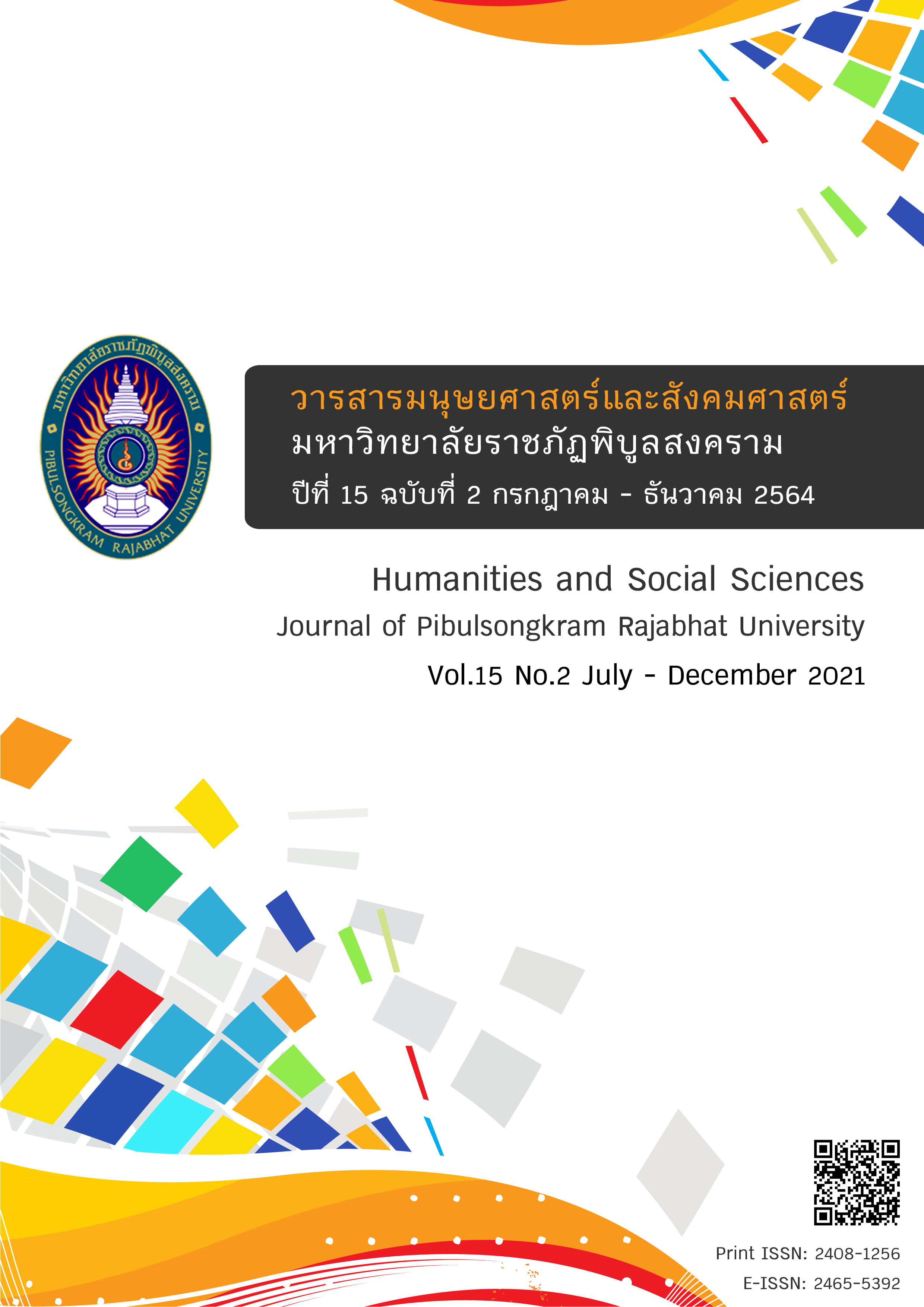Eco-Critical Discourse Analysis in Cambodian Folktales
DOI:
https://doi.org/10.14456/psruhss.2021.42Keywords:
Eco-Critical Discourse, Cambodian folktalesAbstract
This research study aims to study the Eco-Critical Discourse in Cambodian Folktales translated in Thai version, in which it was published in 1997 by the Khmer Cultural Advisory Committee. By studying document research Through information on Cambodian folktales, consisting of 8 stories, such as 1) Crocodile and cart driver 2) Animals choose to be king 3) The tradition having a sorcerer auspicious time 4) The birth of porpoise 5) The tradition of putting flowers, incense, and candles into the dead and 6) Buffalo wild and buffalo house. The result of this research found that the ecological discourse in Cambodian Folktales reflects the relationship between humans and nature and the environment. Therefore, the researcher has divided issues of the study of physical, natural image representation into three points, namely 1) Discourse Sociological meaning refers to the relation between humans and the ecosystems, family, sociology, the role of society and culture 2) Animal Discourse refers to the relationship between human and animal Cambodian folktales, and 3) Discourse Ideological meaning refers to the Environmental ideology in Cambodian folktales providing ideas that explain the relationship between humans and nature.
References
ชูศักดิ์ ภัทรกุลวณิชย์. (2560). โครงสร้างนิยมกับไวยากรณ์ของเรื่องเล่า. ใน ทฤษฎีกับการวิจารณ์ศิลปะ: ทัศนะของนักวิชาการไทย. กรุงเทพ: สายส่งศึกษิต.
ธัญญา สังขพันธานนท์. (2560). ใช่เพียงเดรัจฉาน: สัตว์ศึกษาในมุมมองของการวิจารณ์แนวนิเวศ ทฤษฎีกับการวิจารณ์ศิลปะ: ทัศนะของนักวิชาการไทย. กรุงเทพฯ: สายส่งศึกษิต.
นิทานพื้นบ้านเขมร. (2001). ควายป่าสอนควายบ้าน. กรุงพนมเปญ: คณะที่ปรึกษาวัฒนธรรมเขมร.
นิทานพื้นบ้านเขมร. (2001). ประเพณีการมีอาจารย์ถือฤกษ์ยาม. กรุงพนมเปญ: สถาบันพุทธศาสนบัณฑิต.
นิทานพื้นบ้านเขมร. (2001). ประเพณีการใส่ดอกไม้ธูปเทียน ในมือคนตาย. กรุงพนมเปญ: สถาบันพุทธศาสนบัณฑิต.
นิทานพื้นบ้านเขมร. (2001). สัตว์เลือกกันเป็นราชา. กรุงพนมเปญ: สถาบันพุทธศาสนบัณฑิต.
ประยูร ทรงศิลป์. (2558). นิทานพื้นบ้านเขมร. มหาสารคาม: ภาควิชาภาษาไทยและภาษาตะวันออก คณะมนุษยศาสตร์และสังคมศาสตร์ มหาวิทยาลัยมหาสารคาม.
สุนทร คำยอด. (2562). อุดมการณ์สิ่งแวดล้อมในเอกสารโบราณล้านนา. วารสารมนุษยศาสตร์และสังคมศาสตร์ มหาวิทยาลัยพะเยา, 2(3), 57-68.
Alexander, R., & Stibbe, A. (2014). From the Analysis of Ecological discourse to the Ecological Analysis of discourse. Language Sciences, 41, 104-110.
Bang, J. Chr., & Døør, J. (2000). Dialectical Ecolinguistics. Denmark: University of Odense.
Buell, L., Heise, U. K., & Thornber, K. (2011). Literature and Environment. Annual Review of Environment and Resources, 36, 417-440.
Bundsgaard, J., & Steffensen, S. (2000). The dialectics of ecological morphology or the morphology of dialectics. In A. V. Lindo & J. Bundsgaard (Eds.), Dialectical ecolinguistics (pp. 8-36). Odense, Denmark: University of Odense.
Derni, A. (2008). The Ecolinguistic Paradigm: An Integrationist Trend in Language Study. The International Journal of Language Society and Culture, 24, 21-30.
Elza Kioko Nakayama Nenoki do Couto, & Albuquerque, D. (2015). Ecological discourse analysis: theoretical and methodological foundations foundations. Revista de Estudos da Linguagem, Belo Horizonte, 23(2), 485-509.
Fairclough, N. (1992). Discourse and Social Change. Cambridge: Polity Press.
Mokoagouw, M. E. (2018). Environments Triple dimensions in Fairytales: A dialectical ecolinguistics perspective. InternationalJournal of Linguistics, Literatureand Culture, 4(4), 10-16.
Stibbe, A. (2014). An Ecolinguistic Approach to Critical Discourse Studies. Critical Discourse Studies, 11(1), 117-128.
Downloads
Published
How to Cite
Issue
Section
License
Any articles or comments appearing in the Journal of Humanities and Social Sciences, Rajabhat Phibulsongkram University, are the intellectual property of the authors, and do not necessarily reflect the views of the editorial board. Published articles are copyrighted by the Journal of Humanities and Social Sciences, Rajabhat Phibulsongkram University.









